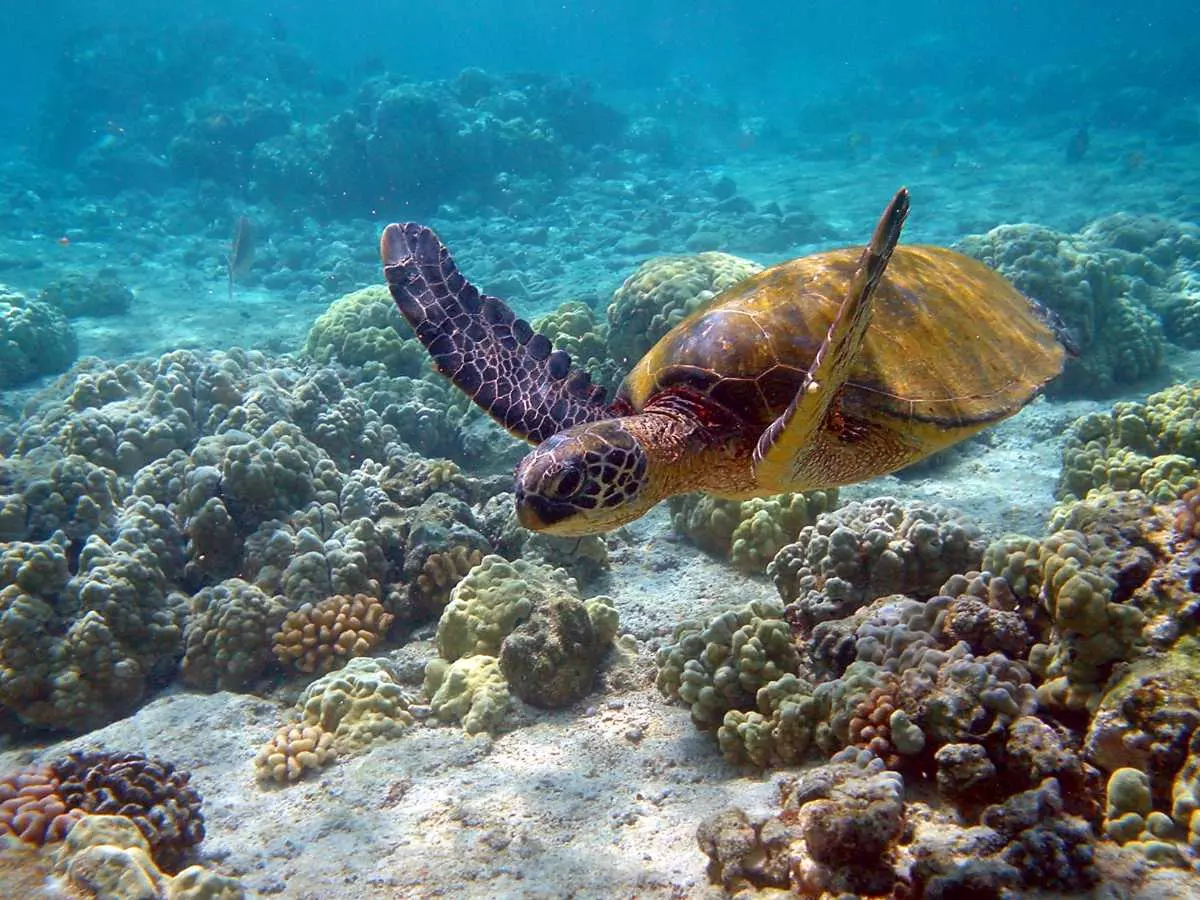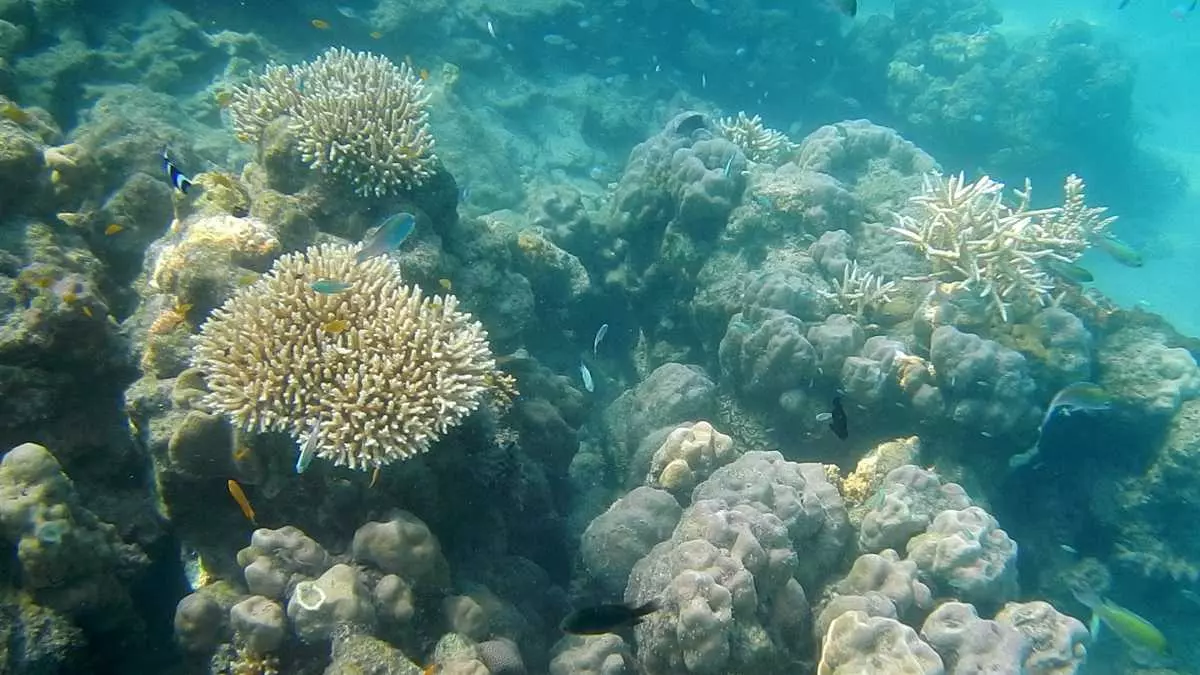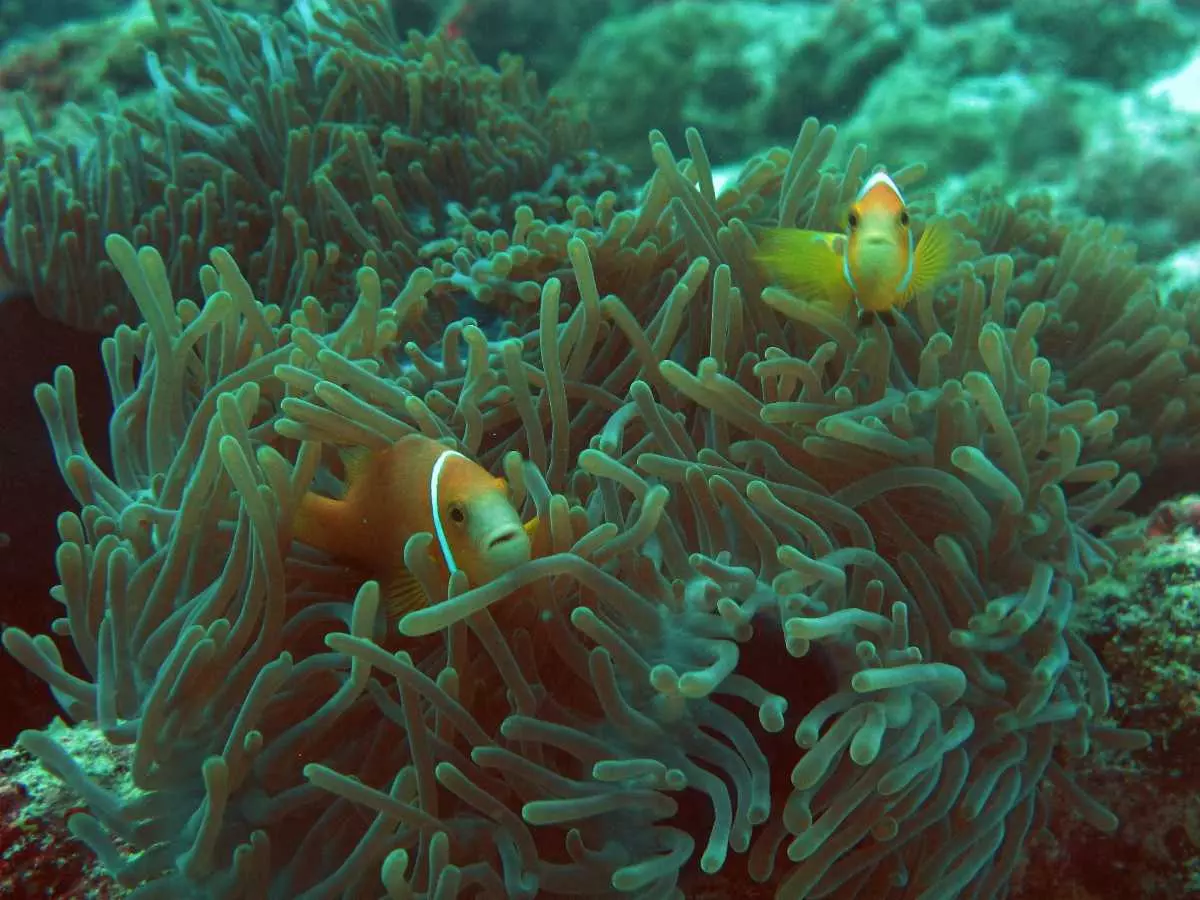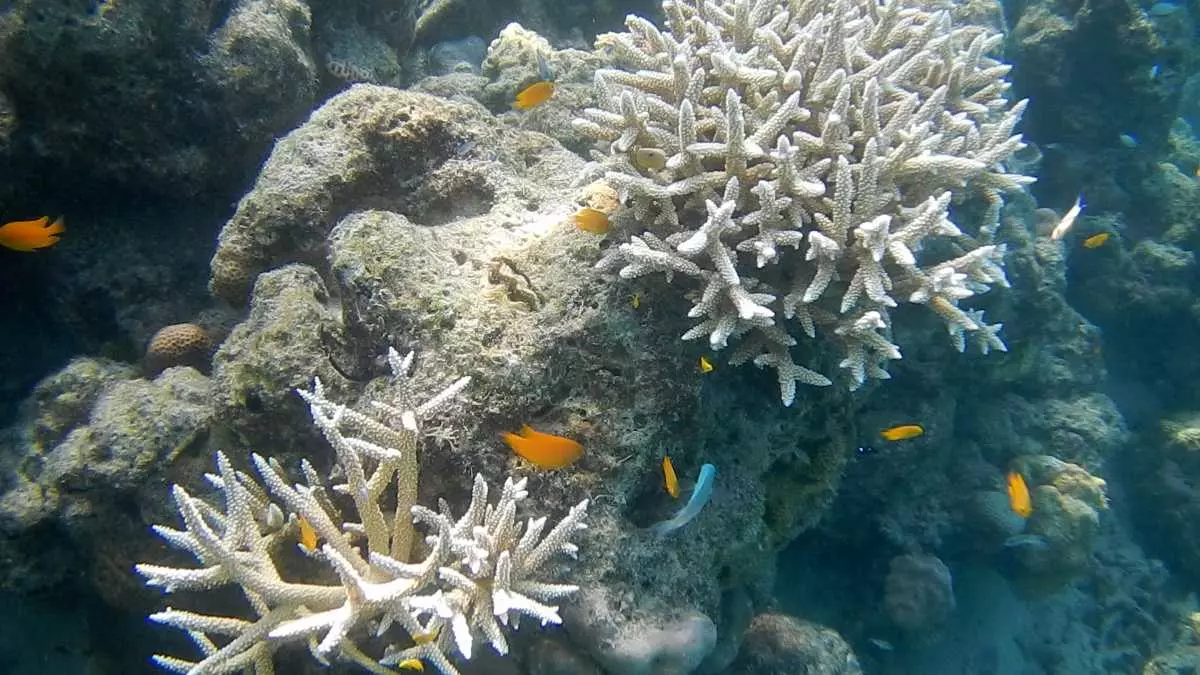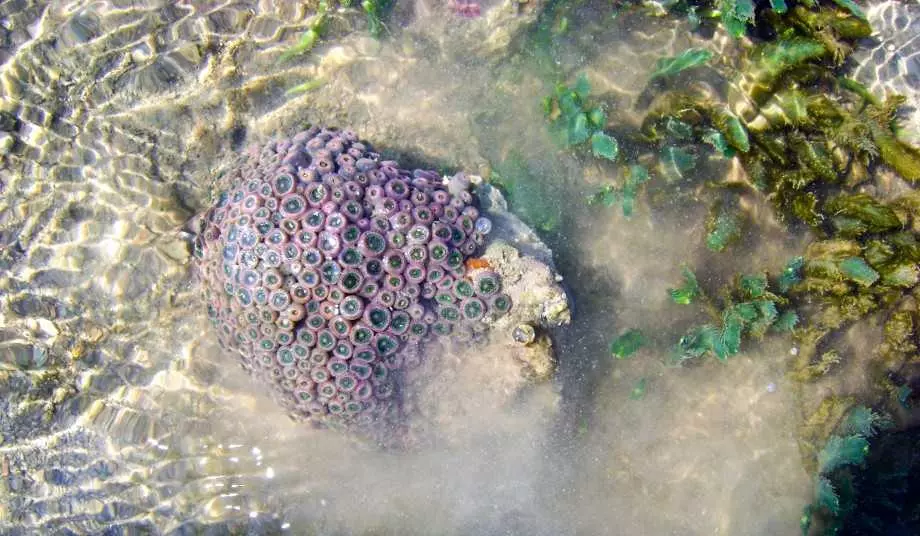Coral Reefs of India
Blogs Home
- 14 Dec 2021
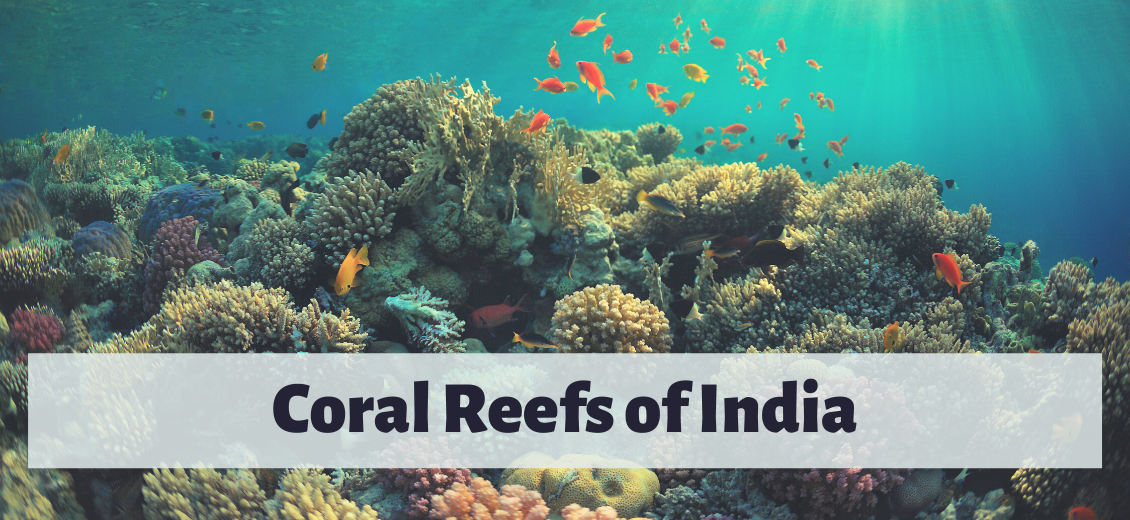
"Why is it that scuba divers and surfers are some of the strongest advocates of ocean conservation? Because they’ve spent time in and around the ocean, and they’ve personally seen the beauty, the fragility, and even the degradation of our planet’s blue heart".
— Sylvia Earle
Gorgeous, alive and diverse - the coral reefs of India have stunned millions of scuba divers and people, all around the world.
Being one of the most ancient and dynamic ecosystems of the world, coral reefs have been necessary to sustain life in the oceans. Due to the warm, tropical region in India, corals thrive in the Indian Ocean. These reefs not only provide sanctuary to a vast ecosystem but also protect the coastlines from eroding.
How are they formed?
Coral polyps are tiny and fleshy sea anemones that live in tropical and subtropical oceans and seas. They live in shallow waters along with microscopic algae called Zooxanthellae, with which they share a symbiotic relationship. This algae has photosynthesis abilities that feed the coral polyps with carbon compounds which give them energy. In return, the polyps provide protection to Zooxanthellae.
Coral reefs are formed when the freely moving larvae of corals attach themselves to sedimentary rocks or hard surfaces near the coastlines. This process is undertaken with the help of several other processes like sedimentation, compaction, cementation and solidification of the skeletons of coral polyps.
Where are coral reefs found in India?
India is recorded to have around 7,517 km of coastline but only 6,100 km represents the mainland coastline. The three major types of coral reefs found in India are fringing, barrier and atolls.
Coral reefs in India are found in a lot of areas including the Gulf of Kutch, Gulf of Mannar, Palk Bay, Andaman & Nicobar and Lakshadweep Islands. The Gulf of Kutch in the northwest has some of the most northerly reefs in the world.
Patches of coral reefs are also found in Ratnagiri, Malvan and Redi, south Bombay and at the Gaveshani Bank located in the west of Mangalore.
Corals running parallel to the shore are found at Quilon near the Kerala coast to Enayem in Tamil Nadu. On the east coast, between Parangipettai (south of Cuddalore) and Pondicherry, corals are found in abundance. When it comes to island corals, the Andaman and Nicobar Islands, and Lakshadweep Islands are rich with flourishing corals.
Types of coral reefs in India
India has three major prevailing types of coral reefs:
1. Fringing reefs
Fringing reefs evolve and develop near the continent and remain close to the coastline. These reefs are separated from the coastline by small, shallow lagoons. They are the most commonly found reefs in the world.
2. Barrier reefs
Barrier reefs are found offshore on the continental shelf. They usually run parallel to the coastline at some distance. A deep and wide lagoon is located between the coastline and the barrier reef.
3. Atolls
Atolls are formed on mid-oceanic ridges. They are shaped circularly or elliptically and are surrounded by seas on all four sides and have shallow waters in the center called a lagoon.
What are the ideal environmental conditions for corals to grow?
Coral reefs have certain conditions that must be met for them to grow in full bloom.
1. Shallow water
Coral reefs need to grow in shallow parts of the water. The surface of the reef shouldn’t be more than 80m from the water surface. The Zooxanthellae need adequate sunlight for their photosynthesis processes.
2. Semi-hard or hard surface
The semi-hard or hard surface is a precondition for compaction, cementation and solidification of the coral polyps skeletons.
3. Clear water
The beautiful coral polyps perish in areas filled with sediment-filled waters. Moreover, they cease to exist in opaque waters. This is because the presence of sediments and opaque water limits the passage of sunlight to the algae that sustains their life.
4. Warm water
Coral reefs are directly connected with the warm oceanic waters. The temperature of the water must be around 20 degrees. Hence, coral reefs generally prevail on the eastern coasts of continents. However, this is not true in the case of India as the eastern waters are filled with high amounts of sediment matter.
5. Saline-filled waters
The slight salt in ocean waters is extremely important for the development of coral polyps. The polyps extract calcium from the waters to protect their skeletons. Hence, mild salinity is a necessity for coral reefs to flourish.
6. Rich supply of nutrients
Coral reefs flourish in sea waters because ocean waves support the constant supply of rich nutrients. Coral polyps multiply faster when supplied with nutrients.
Why is the survival of corals and coral reefs important to human and marine life?
Corals are important to marine life because of the following reasons:
- The health of the marine ecosystem is dependent on corals.
- They support a wide range of ecosystems and hence, are called the rainforests of the ocean.
- Corals provide a place to live for a huge variety of fish.
- Corals are a primary source of food in the marine ecosystem.
Coral reefs have a somewhat similar significance.
1. Coastal protection
Coral reefs act as a barrier and protect the coastal areas from strong ocean currents and waves. They provide protection from ocean storms and cyclones. With the increasing amount of cyclones in India due to climate change, these natural barriers have become excessively important.
2. Food source
Fish that live in and around coral reefs are a healthy source of protein for billions of people, mainly living on coastlines. Some fishing industries are entirely dependent on the coral reefs and the wildlife that it attracts.
3. Medicinal properties
Coral reefs are said to be the medicine chests of the sea. Some fish that the corals attract, leave behind some chemical compounds that are similar to the ones used in human hospitals.
4. Meteorology
A new study by the Indian Institute of Meteorology has stated that corals along the north-western coast provided insights on the patterns of the onset and withdrawal of Indian monsoons.
5. Tourism
Most of the gross national product of countries with coral reef industries comes from the tourism sector due to these beautiful corals. A study had estimated that the value of coral reefs was $10 billion and the direct economic benefits were approximately $360 million per year.
What are the threats that push corals to the brink of extinction?
Coral reefs are facing a large number of threats, directly or indirectly, by human actions. Scientists believe that all coral reefs will face threats by 2050, 75% of them facing high-risk threats. Some of these threats are:
1. Global warming
Due to global warming, the waters are getting more acidic and posing threats to the coral ecosystem. Moreover, the glaciers across the world are melting due to which sea levels are rising. Rising sea levels lead to the coral reefs drowning and not getting enough sunlight which leads to their slow growth.
2. Coral Bleaching
Coral bleaching takes place when the oceans get warmer. Since corals have a narrow temperature tolerance, they get stressed and release a symbiotic algae in response. When they run out of the algae, they run out of their life source and hence, cease to exist.
3. Marine pollution
Marine pollution in the form of plastic pollution and other activities has led to the corals being suffocated. Coral reefs need air and space to breathe. With the rising levels of sea pollution, we might lose them sooner than we thought.
4. Stronger storms and ocean acidification
The upsurge of stronger storms has led to oceanic waves that break and damage the coral reefs. They might even break colonies and make them unsafe for living. As the sea absorbs more and more CO2, the pH levels continue to increase. High pH levels lead to weaker coral skeletons, their vulnerability to diseases and destruction by storms.
5. Ozone depletion
Coral polyps have in-built UV rays protection. However, now that the radiation is increasing, the corals in shallow waters can get damaged and destroyed.
Laws protecting the coral reefs of India
The Ministry of Environment, Forest and Climate Change makes and ensures the guidelines and laws protecting coral reefs are followed properly. The State Wildlife department takes care of the corals if the coral reef region comes under a protected area.
All marine resources are protected under the Coastal Regulation Zone (CRZ) of 1991. It provides protection to all coral reefs under the CRZ1 category of the law. The specific Section 7 (2) of the CRZ states that no hotels or resorts are to be made on coral reefs. The mining and quarrying of coral reefs are banned in some states, except for scientific purposes.
Coral reefs have sustained life for over a million years. Its diverse ecosystem keeps marine life running. It would not be in our best interest to interfere with the coral reefs. Conservation methods should therefore be taken to protect these beautiful polyps. Laws should be strictly enforced and if not followed, penalties should be imposed swiftly. It is in our best interest to protect our corals from eroding and withering away. Let’s make a pact to do what we can to protect them, today.
Jess Doshi
NOAA. (2019, November 13). How Does Climate Change Affect Coral reefs? Noaa.gov; National Ocean Service.
https://oceanservice.noaa.gov/facts/coralreef-climate.html
Coral Reefs in India: Introduction, Types, Formation, Locations: IAS. (n.d.). Byjusexamprep.com. Retrieved December 2, 2021, from
https://byjusexamprep.com/coral-reefs-in-india-i
US Department of Commerce, N. O. and A. A. (n.d.). How Do Coral Reefs Form: Corals Tutorial. Oceanservice.noaa.gov.
Wikipedia Contributors. (2019, September 1). Coral reefs in India. Wikipedia; Wikimedia Foundation.
https://en.wikipedia.org/wiki/Coral_reefs_in_India
6 Beautiful Coral Reefs in India - Holidify. (n.d.). Www.holidify.com. Retrieved December 2, 2021, from
https://www.holidify.com/pages/coral-reefs-in-india-4346.html
Coral Ecosystem in India: Importance, Distribution, threats, Way Forward. (2020, October 15). IAS EXPRESS.
https://www.iasexpress.net/coral-ecosystem-in-india-importance-distribution-threats-way-forward/
Marine pollution, coastal development: Coral reefs need to be saved. (n.d.). www.downtoearth.org.in. Retrieved December 2, 2021, from
https://www.researchgate.net/publication/242752716_CORAL_REEFS_IN_INDIA

